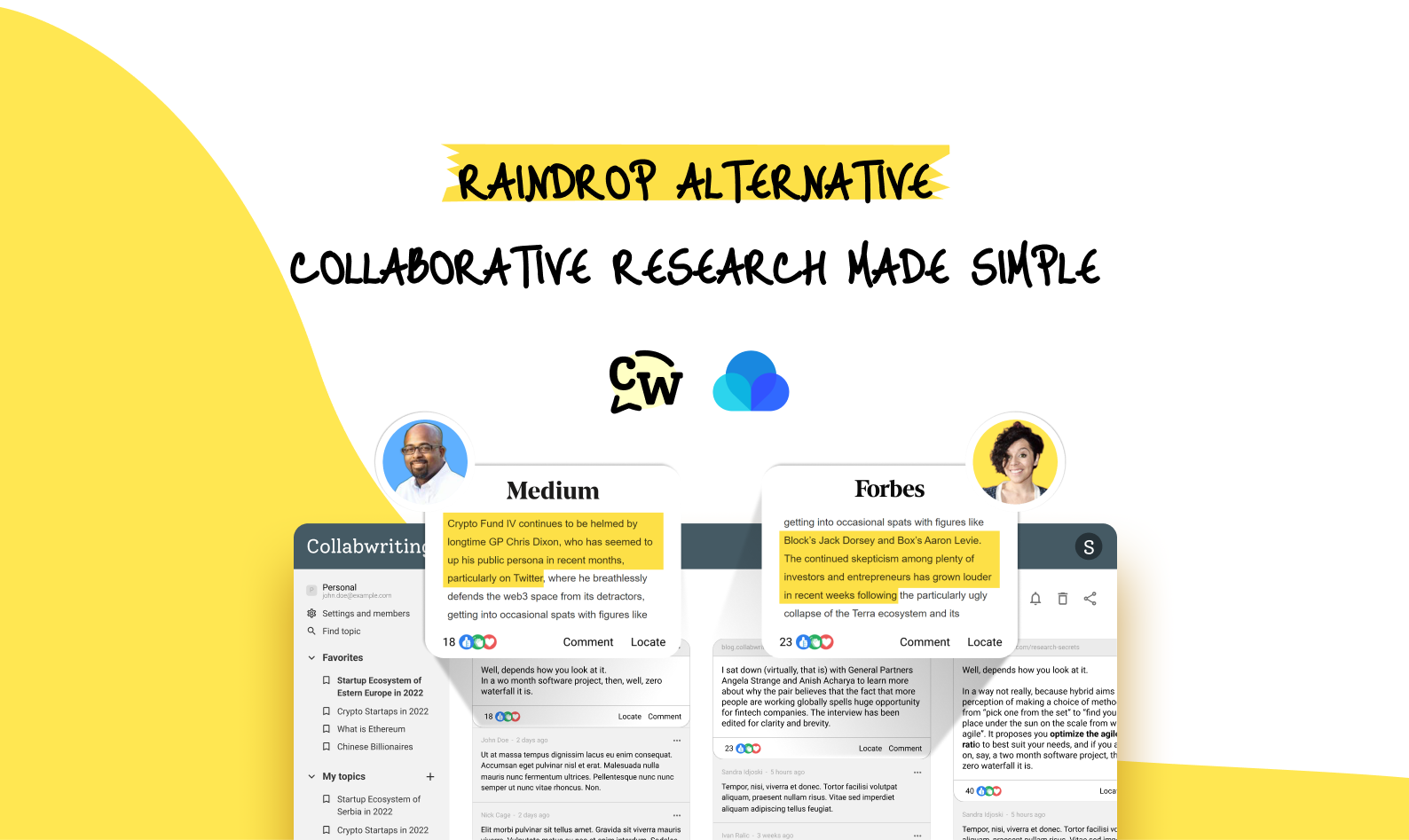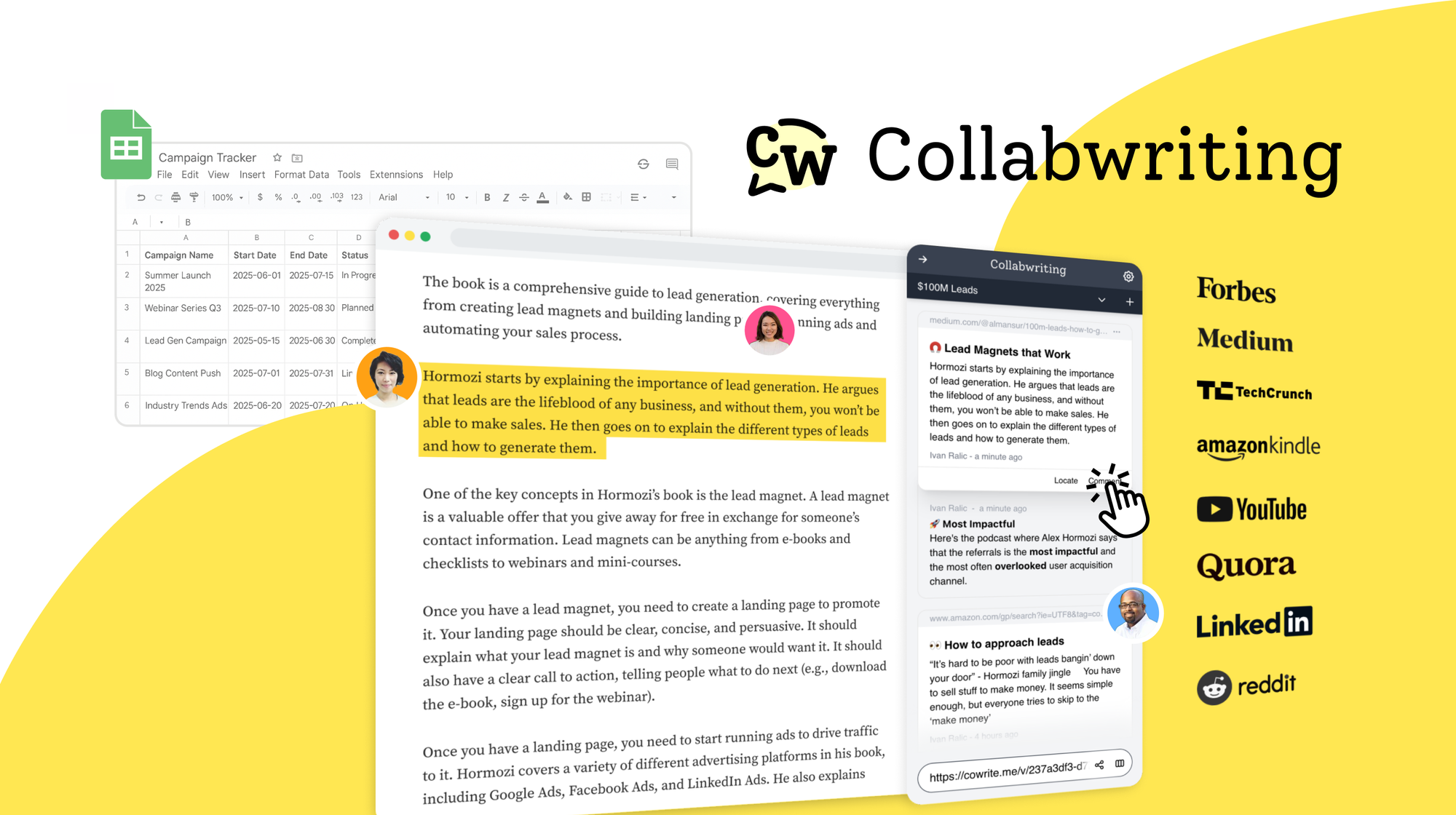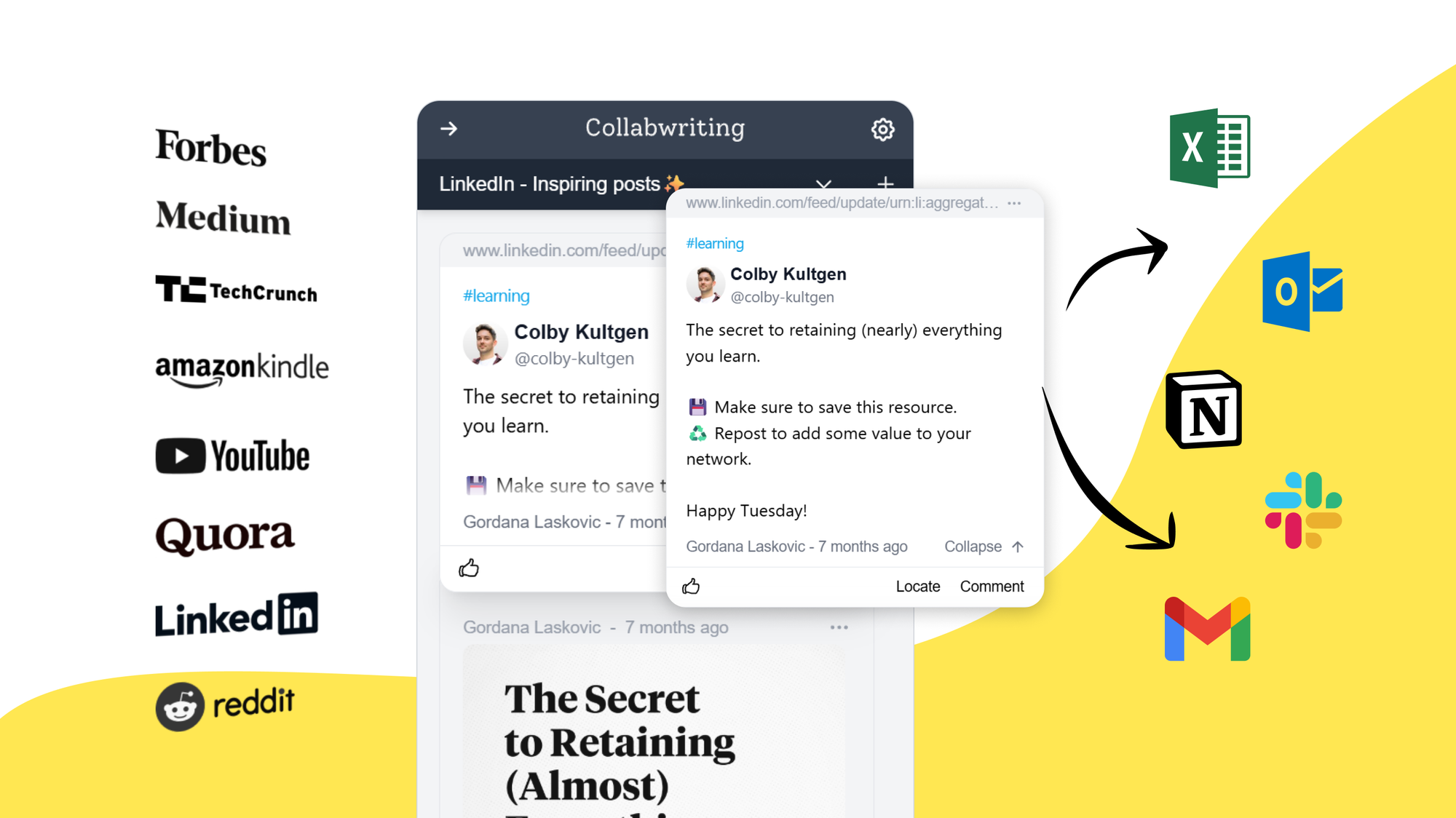Nothing says “good morning” like a brand-new PDF to review.
You know the feeling.
You open your inbox and see the subject line: “Final-final-edited-v3.pdf.”
But it’s never final. You take a deep breath, download the file, and prepare for battle.
Scrolling… scrolling… scrolling.
Then comes the note:
“Can you please fix the typo on page 76, paragraph 2, next to the image?”
Sure. Let me just time-travel to that specific spot inside a 150-page PDF and hope I don’t lose my mind.
Wish me luck.
Why PDF collaboration hurts more than it should
PDFs are great for preserving layout and design. What they’re terrible at is collaboration.
✖️ You can’t easily leave comments in context. ✖️ You can’t track who said what.
And if you try to coordinate edits over email or chat, you end up juggling attachments like a circus performer on deadline.
Some people try to fix it with screenshots, some with Paint doodles, and some with never-ending email chains that go something like this:
“Hey, can you clarify what you meant in the comment from slide 17? Also, which version are we using now?”
By the time feedback is gathered, everyone’s confused, and no one’s sure which version of the file is “final.”
It’s not the PDF’s fault - it’s the workflow
The truth is, the problem isn’t really the PDF format itself. It’s how we work around it.
We treat PDFs like static, untouchable artifacts instead of what they often are — living documents that need discussion, iteration, and alignment.
That’s where good PDF collaboration features come in. But most “solutions” only move the pain elsewhere:
- You upload the file to a shared drive 👉🏼 people comment out of context.
- You convert the PDF to Word 👉🏼 formatting breaks.
- You record a video explaining changes 👉🏼 nobody watches it.
It’s the same chaos, just in a different app.
The good news: there’s a smarter way to collaborate on PDFs
Picture this instead:
You drop your PDF into a shared workspace. You highlight a section. You leave a comment or tag a teammate right on that part of the document.
No attachments. No screenshots. No “did you get my version?” messages.
That’s exactly what you can do with Collabwriting.
It brings together all the essential PDF collaboration features, such as contextual comments, real-time updates, and shared access, into one clean workspace.
You can open a PDF in your workspace, highlight a sentence, paragraph, or visual, and add your feedback with a click.
Every comment stays connected to its source. And everyone sees the same thing.
3 steps to making PDF collaboration actually collaborative
1. Stop emailing attachments
Email is where context goes to die.
Instead of sending multiple PDFs back and forth, use a shared Collabwriting workspace. You can open the PDF, highlight any part you want to comment on, and leave your notes directly - the PDF itself stays unchanged.
2. Comment where it matters
No more “see page 14, second column” confusion.
Highlight the exact part of the PDF you’re talking about and leave a note, question, or suggestion right there.
You can even tag teammates for input, so nothing slips through the cracks.
3. Keep everything connected
Your PDFs rarely exist in isolation. They’re part of a bigger project - with research, references, and supporting materials scattered across tabs, docs, and chats.
In Collabwriting, you can link insights from other sources (articles, reports, videos) under the same topic, keeping everything in context.

Key PDF collaboration features that actually make a difference
Here’s what makes PDF collaboration actually collaborative inside Collabwriting:
- Contextual highlights & comments - pinpoint the exact part of a PDF and discuss it right there.
- Shared workspace - everyone sees the same version, without downloads or attachments.
- Threaded feedback - every comment turns into a mini discussion, not a new email.
- Searchable insights - find exactly where an idea came from, across your saved PDFs and notes.
- Cross-source context - combine feedback from web pages, research papers, and PDFs in one place.
No plug-ins. No installations. Just open your browser and start collaborating.
Why these PDF collaboration features matter
Creative and research-heavy teams live and breathe in PDFs - reports, proposals, content drafts, client feedback.
But the tools for collaborating on them haven’t evolved with the way we actually work.
That’s why having the right PDF collaboration features matters.
Collabwriting brings that missing layer of real collaboration - one where feedback is instant, traceable, and connected.
Instead of spending hours gathering, formatting, and resending files, you get to focus on what actually matters: refining the content itself.
See Collabwriting in action 👇🏼
Final thought
So next time someone sends you a “please review” PDF, remember, you don’t have to dread it.
You can open it in Collabwriting, highlight, comment, and share with a single link.
No more chaos. No more version wars. Just clarity, context, and calm. 🌿
Because PDF collaboration doesn’t have to feel like a punishment, not when you have the right features for it.
☕ Ready to make your next review cycle peaceful?
Try it with Collabwriting. 👈🏼
FAQ
Why is collaborating on PDFs so painful?
PDFs preserve layout and design but weren’t built for real-time collaboration. Leaving comments in context, tracking who said what, or managing multiple versions via email or chat often leads to confusion, lost feedback, and wasted time.
Is the PDF itself the problem?
Not really. The problem is the workflow around it. Treating PDFs as static files instead of living documents for discussion and iteration causes most of the chaos.
What are common “solutions” for PDF collaboration that don’t work?
- Uploading to shared drives → comments out of context
- Converting to Word → formatting breaks
- Recording videos explaining changes → nobody watches
These approaches move the pain instead of solving it.
How does Collabwriting make PDF collaboration better?
Collabwriting turns PDFs into interactive, collaborative documents:
- Highlight & comment in context: Leave notes exactly where they matter.
- Tag teammates: Bring in the right people without extra emails.
- Shared workspace: Everyone sees the same version, no attachments needed.
- Threaded discussions: Every comment becomes a mini discussion, not an endless email chain.
- Cross-source context: Link insights from articles, reports, videos, or other PDFs for a complete view.
How do I start collaborating on PDFs with Collabwriting?
- Stop emailing attachments - use a shared workspace instead.
- Highlight the section you want to comment on and add your note or question.
- Keep everything connected - link other sources and references under the same project or topic.
Why do these features matter?
Teams that work with research-heavy or creative content spend less time chasing versions, collecting feedback, or juggling attachments. Collabwriting ensures feedback is instant, traceable, and context-rich, so the focus stays on improving content.
How does this compare to traditional PDF workflows?
Instead of juggling attachments, screenshots, emails, or chats, Collabwriting centralizes everything. You see the same version, can track comments in context, and integrate other research sources - all in one place.



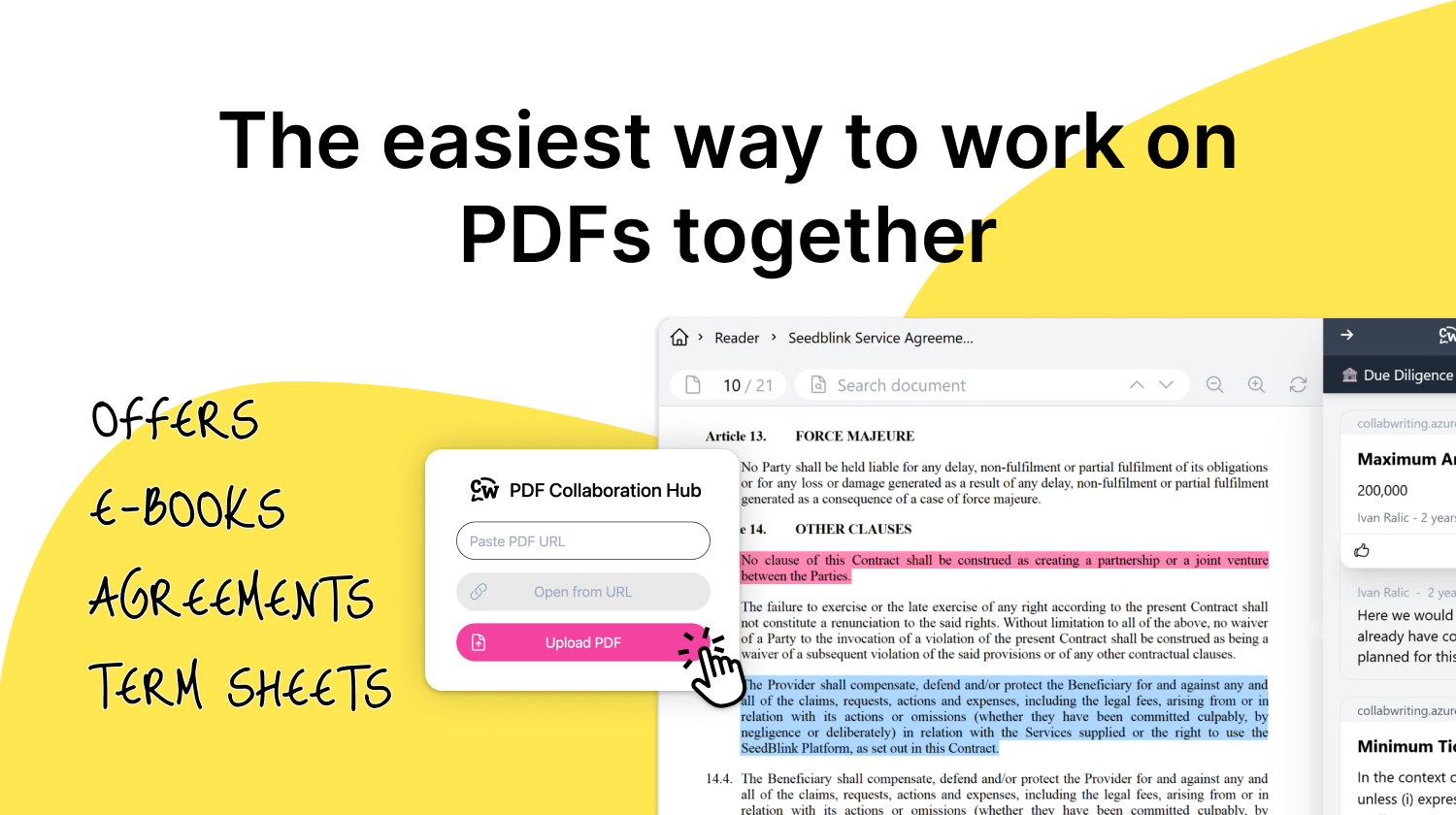
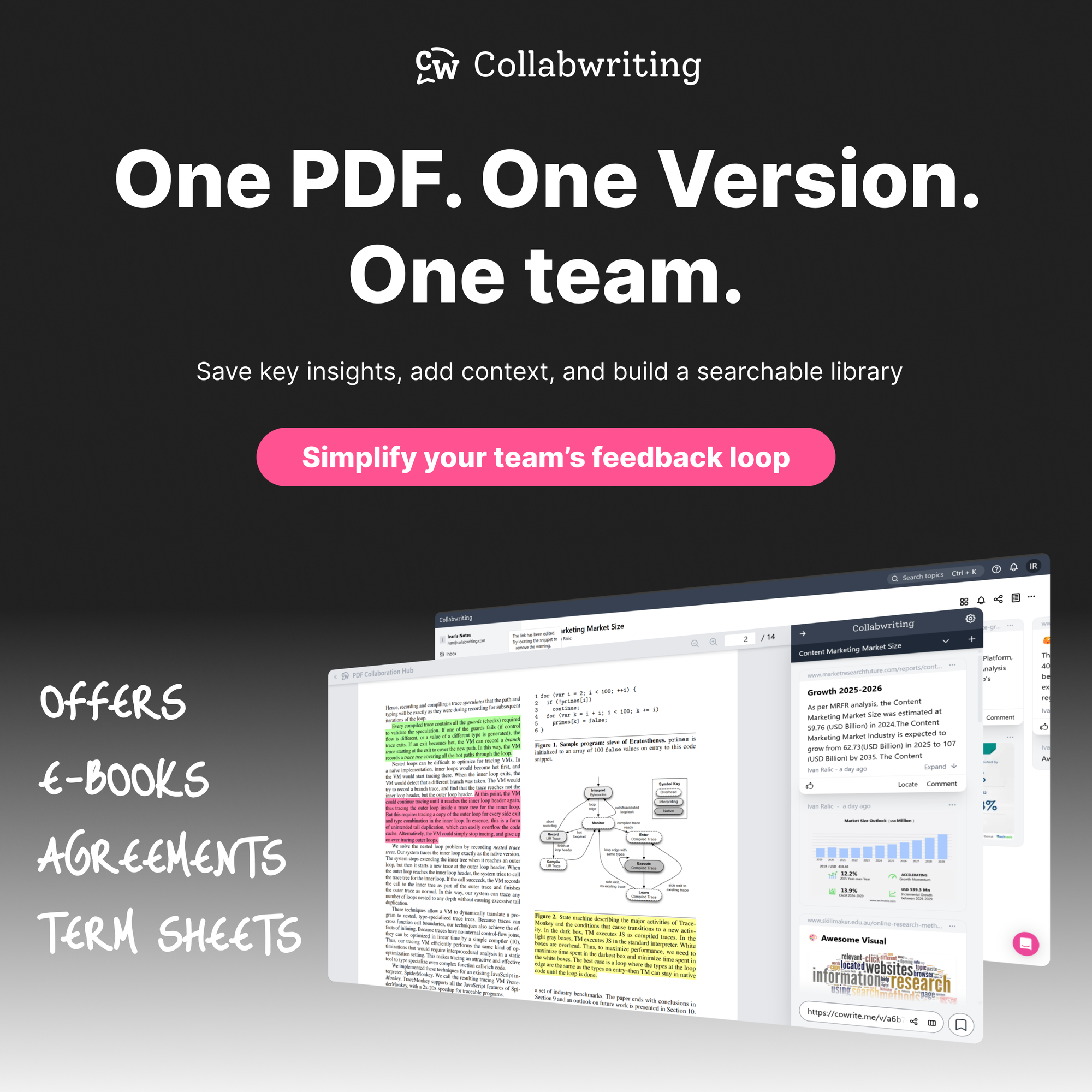

![5 Tools Marketers Use to Organize Research - Compared [2025]](/content/images/2025/11/cover-4-1.png)

![Build Credibility in Research: Smart Way to Verify Information and Track Sources Easily [2025]](/content/images/2025/10/covers-for-blog--7--1.png)
![How Marketers Can Turn LinkedIn Content into Collaborative Research [2025]](/content/images/2025/10/covers-for-blog--8-.png)
![Best Readwise Alternative for Personal & Team Research [2025]](/content/images/2025/09/Frame-814--3-.png)
